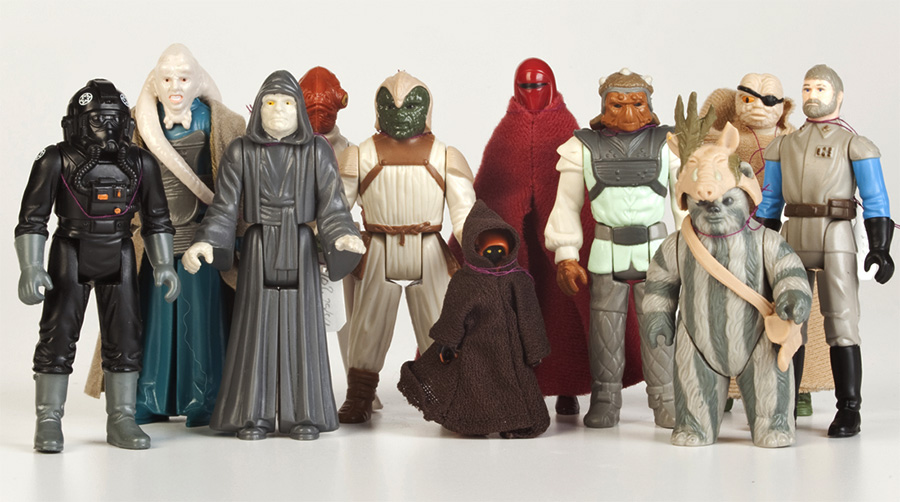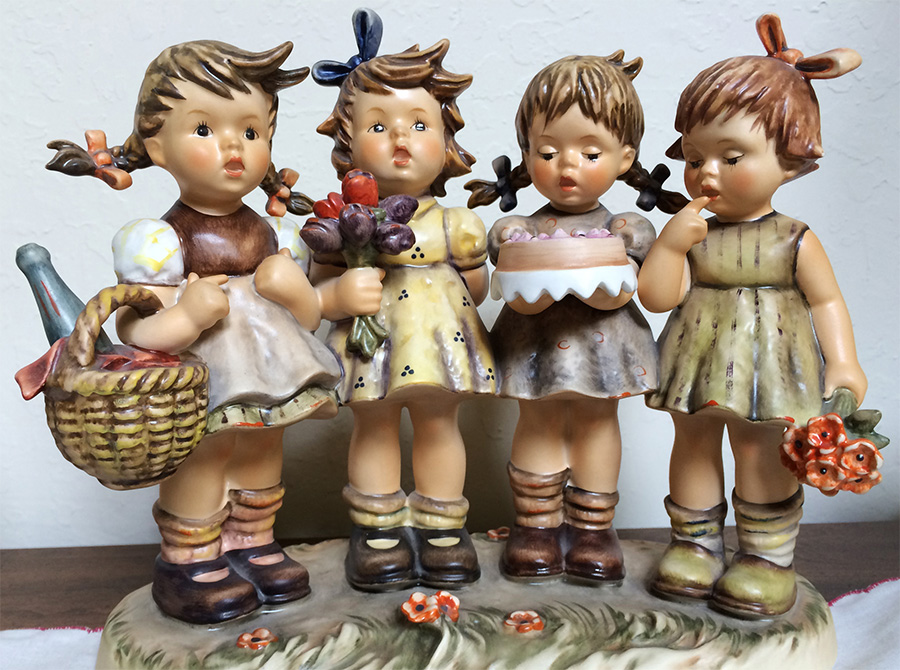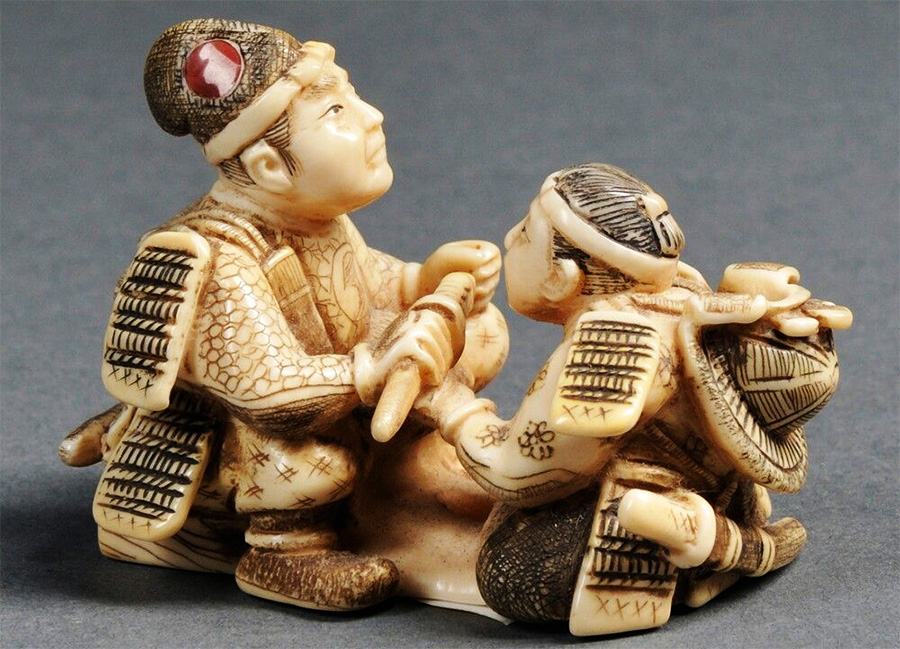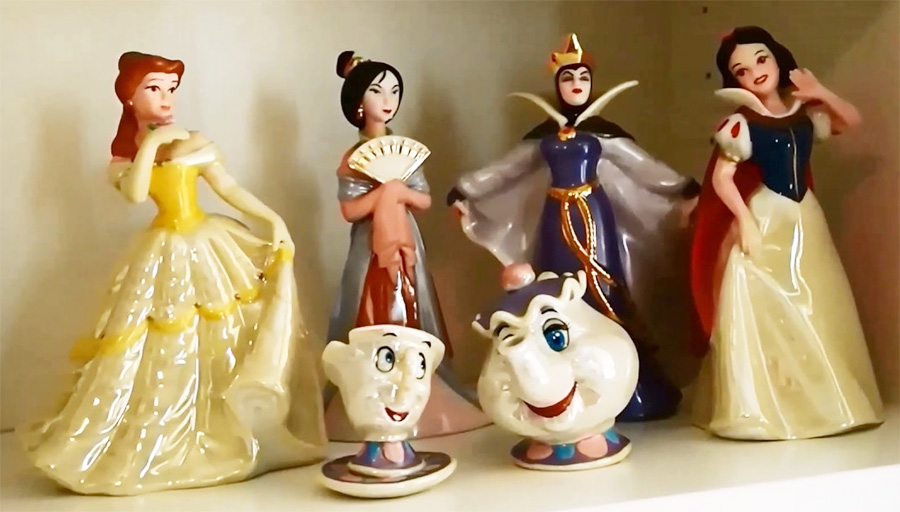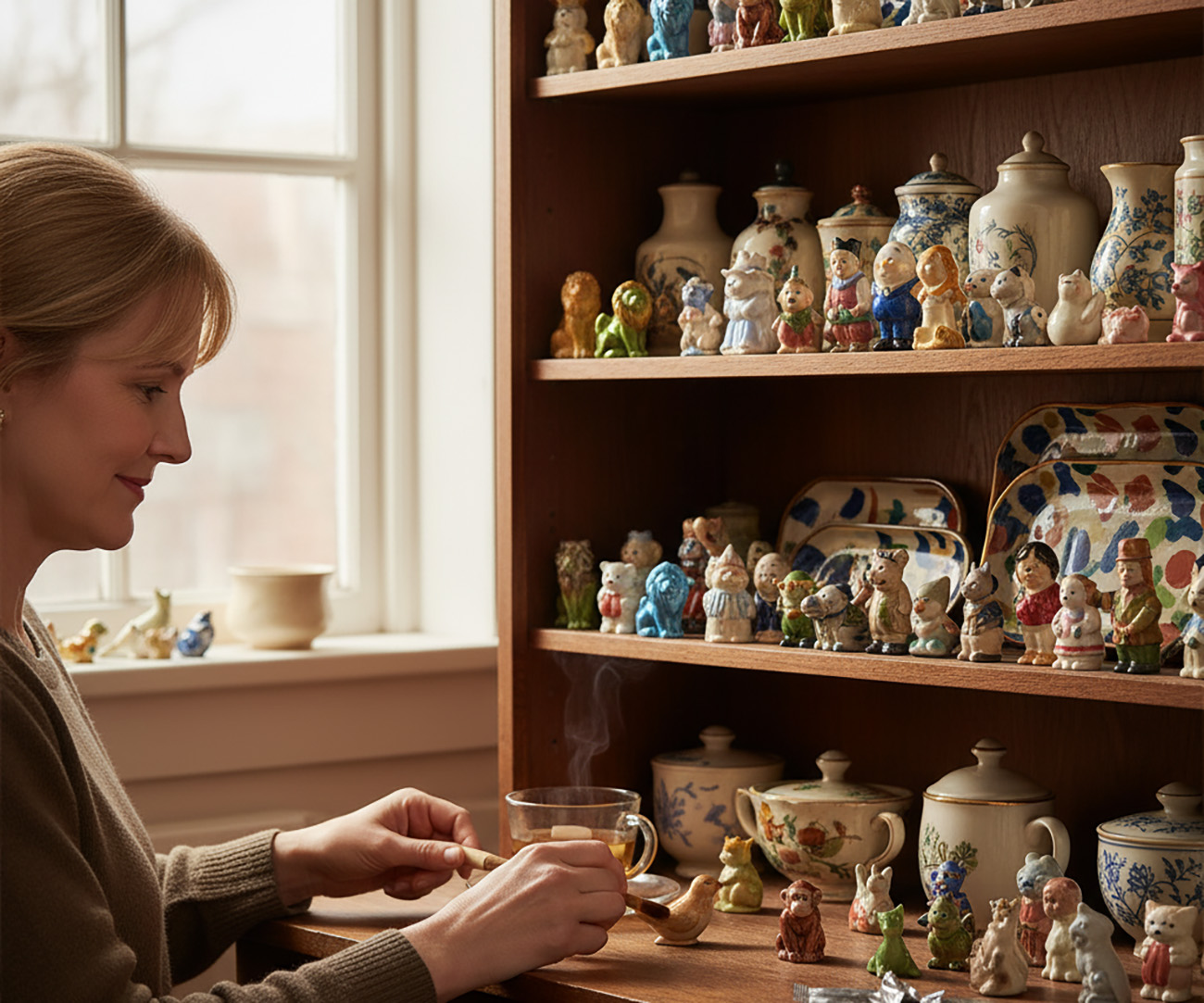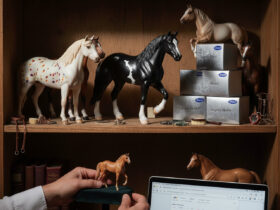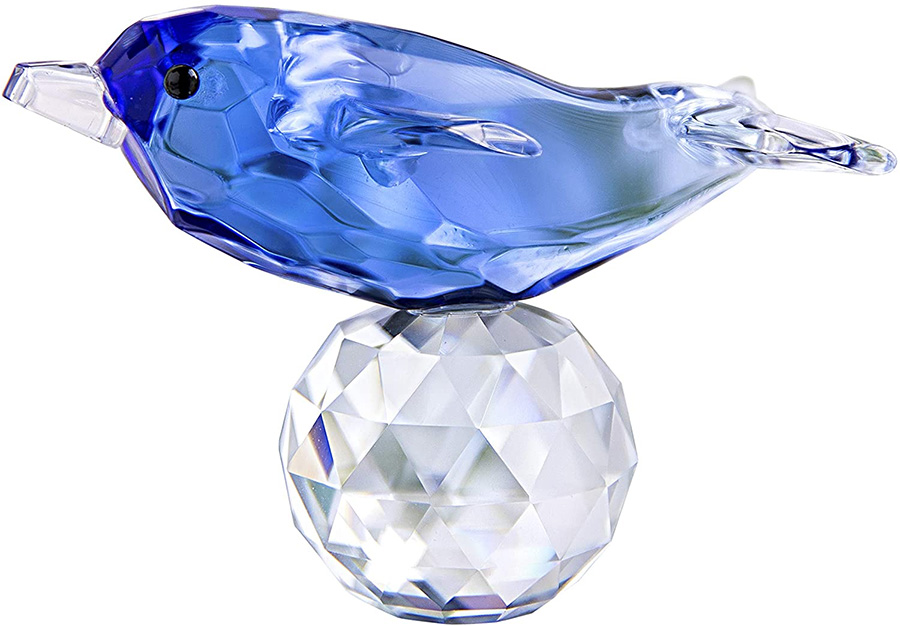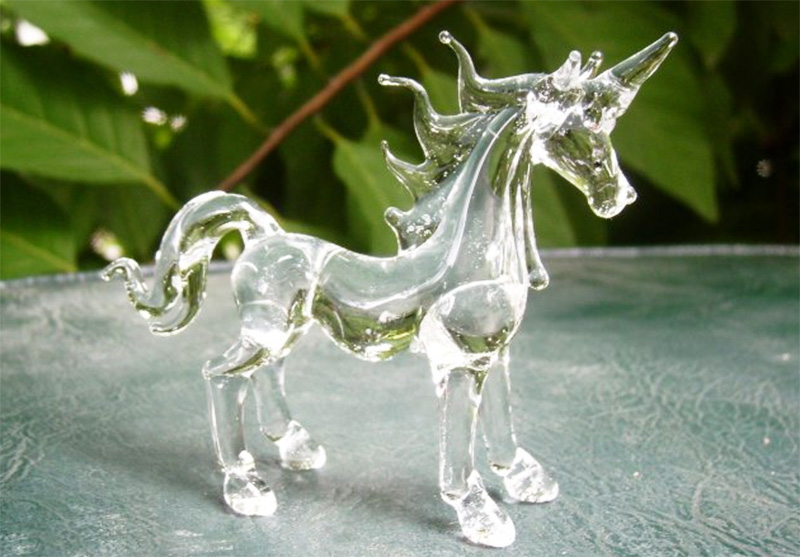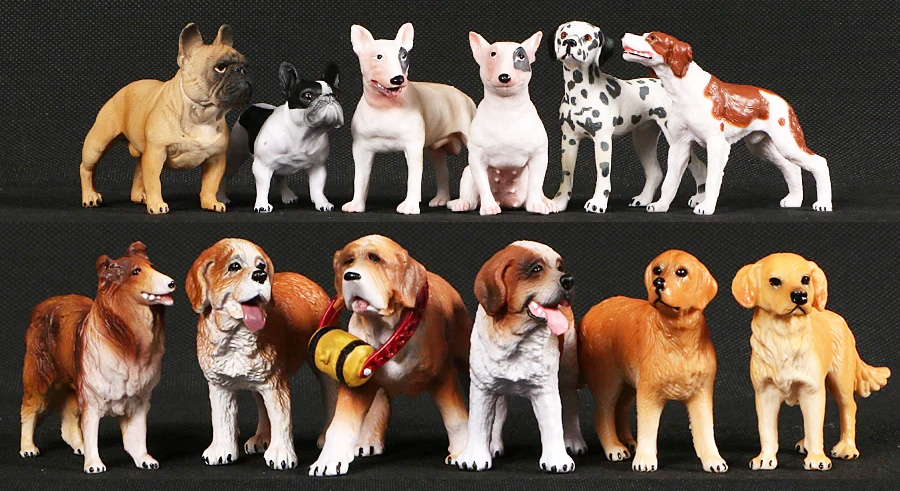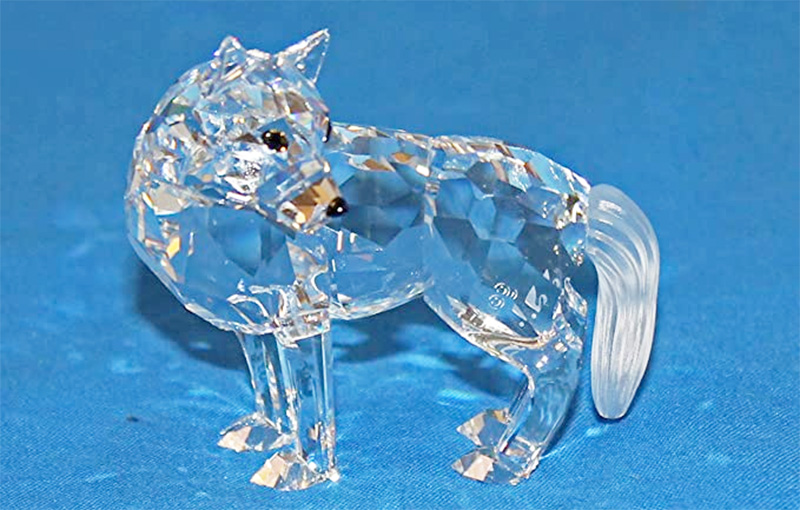The Whimsical World of England’s Most Collectible Miniatures
It’s a specific kind of magic, isn’t it?
For millions of kids across Canada and the United States, the sound of a new box of Red Rose Tea wasn’t about the tea at all. It was about the “thunk.” It was the sound of a small, foil-wrapped packet hitting the kitchen counter. It was the thrill of tearing it open to see what you got. A tiny, porcelain hippo? A blue lion? A little man sitting on a wall?
You’d line them up on the windowsill. They’d gather dust, get knocked over by the cat, or end up in the bottom of a toy box. They were just… there. A simple, free prize from an age before digital everything.
And then, one day, you see a collection of them at a flea market. Or you inherit your grandmother’s kitchen knick-knacks and find a dozen of them in a little bowl. And you realize: these tiny figures, these Wade Whimsies, are an entire world. A world of intricate history, subtle variations, and for some, serious collector value.
That little porcelain figure? It’s not just a toy. It’s a piece of English pottery history, a story that connects a Staffordshire pottery giant to 300 million boxes of tea. And it’s a rabbit hole. Let’s fall down it.
Section 1: The Tiny Titan – What Is a Wade Whimsie?
Before there was Red Rose Tea, there was Wade.
To understand the Whimsie, you have to understand the company. The story begins in Burslem, England—one of the “six towns” that make up Stoke-on-Trent, the heart of the English pottery industry. The Wade family had been involved in ceramics since the 1800s. The key entity, George Wade & Son, was established in 1867.
For decades, they were an industrial giant, making ceramics for the electrical industry (like insulators) and other functional goods. The man who changed everything was Colonel Sir George Wade, who took charge in the 1930s. He had a flair for marketing and saw a future beyond industrial parts.
After WWII, the company began to pivot. In 1954, Sir George’s daughter, Iris Carryer, conceived of a new line of miniature, collectible animal figures. They were small, solid, and coated in the hard, glossy glazes that Wade had perfected. They were christened “Whimsies.”
These were not giveaways. They were high-quality, retail products sold in sets. The first set, released in 1954, included a leaping fawn, a spaniel, a horse, a squirrel, and a poodle. They were an immediate success, and dozens of new sets followed: zoo animals, farm animals, dogs, cats, and birds.
The “Whimsie” was born. But its path to legendary status wouldn’t happen in a fine china shop. It would happen in the grocery aisle.
Section 2: The 300 Million Giveaway – The Red Rose Tea Phenomenon
This is the story most of us know. This is where the Red Rose Tea Wade Whimsies connection begins, and it’s critical to understand that the promotion was, and is, two very different stories.
The Canadian Premiere (1967-2018)
Canada got them first. In 1967, Red Rose Tea (then owned by Brooke Bond) in Canada decided to resurrect the “free prize inside” promotion. They struck a deal with Wade, and the first series of figurines began appearing in boxes.
The Canadian promotions were vast and beloved, running for decades. The most famous series include:
- Canada Series 1: Animals (1967-1973): This is the “classic” set of 32 animals. It included many molds that would later become famous in the US, like the Chimp, Lion, Bison, Elephant, Otter, and Seal. It also included many that didn’t cross the border, like the Angelfish, Squirrel with Nut, and Hedgehog.
- Canada Series 2: Nursery Rhymes (1971-1979): A massive set of 24 figures, including legends like Humpty Dumpty, Little Jack Horner, Puss ‘n Boots, Old King Cole, and the Three Bears. These are the quintessential Whimsies for many Canadian collectors.
- Canada Series 3: Dinosaurs (1985-1996): A set of 10 prehistoric creatures.
- Canada Series 4: Endangered Animals (1994-1999): 10 animals on a green, wedge-shaped “earth” base, including a Mountain Gorilla, Tiger, and Polar Bear.
The Canadian promotions continued with “Noah’s Ark” (1999-2002), “North American Endangered Animals” (2002-2006), “Calendar” (2006-2008), “Pets” (2008-2012), and “Nautical” (2012-2018). In 2018, Red Rose Canada discontinued the promotion, ending a 51-year-old tradition and sending a shockwave through the collecting community.
The U.S. Invasion (1983-Present)
The United States was late to the party, starting its own Red Rose Tea promotion in 1983. The U.S. series were different, used different figures, and ran on a different timeline. This is the single biggest point of confusion for new collectors.
- U.S. Series 1: Animal Friends (1983-1985): A set of 15 figures. It “borrowed” 12 molds from the original Canadian animal set, including the Lion, Chimp, Bush Baby, and Wild Boar.
- U.S. Series 2: Pet Shop (1985-1994): A set of 20 figures. This included 15 animals (like the Polar Bear, Koala, and Tiger) plus 5 brand new “pet” molds: a Pony, Kitten, Puppy, Bunny, and Cockatiel.
- U.S. Series 3: Circus (1994-1999): A set of 15 circus-themed figures, including a Poodle, Lioness, Sitting Elephant, and Ringmaster.
- U.S. Series 4: North American Animals (1999-2005): 15 animals native to the continent, such as the Raccoon, Moose, and Bald Eagle.
- U.S. Series 5: Endangered Species (2006-2008): A short run of 10 animals on a grey rock base.
- U.S. Series 6: The “Pet Shop Friends” Re-release (2008-2012): A return to the popular Pet Shop molds, but in different glaze colors (e.g., a grey puppy instead of honey).
- U.S. Series 7: Nautical Wonderland (2012-2015): 10 sea creatures, including a Crab, Octopus, and Shark.
- U.S. Series 8: Calendar Series (2015-2018): 12 figures representing months of the year (e.g., Leprechaun for March, Turkey for November).
- U.S. Series 9: American Heritage (2018-2020): 10 figures of American icons, like the Liberty Bell, Statue of Liberty, and a Space Shuttle.
- Current Series: Red Rose continues the promotion in the U.S. today, with new sets still being released.
Because they were made in the millions (over 300 million in the U.S. alone), the average Red Rose Tea figurine is the most common and least valuable Whimsie. But they are the gateway drug for the entire hobby.
Section 3: A Collector’s Field Guide – How to Identify Wade Whimsies
So you have a shoebox full of them. How do you perform Wade Whimsies identification? It’s all about the details.
1. The Bottom Line: Markings
This is your first and best clue. Flip the figure over.
- “WADE ENGLAND” (or “WADE ENG”): This is the most common mark. It’s often impressed into the base, but can also be raised. This mark is on most Red Rose Tea figures and retail Whimsies from the 1950s onward.
- “WADE IRELAND”: This is a key differentiator! From the 1950s to the 1980s, Wade had a factory in Portadown, Northern Ireland (Wade Ulster Ltd.). They produced their own lines, including a famous set of Irish figures (Leprechauns, Pookas, etc.) and some nursery rhymes. These are a completely separate, and often rarer, collecting field.
- No Mark: Some very early (pre-1954) figures or very small Whimsies (like some birds) may have no mark at all. Some modern, non-Whimsie figurines made by Wade may also be unmarked or just have a paper label.
2. The Glaze: The “Look” of Wade
This is a more subtle, practiced skill. Wade Whimsies are known for their hard, high-gloss, and often “runny” glazes. The color is deep and vibrant. You’ll often see the glaze “pool” in crevices, creating darker areas, and stretch thin on sharp edges, revealing a hint of the white porcelain beneath.
This is what separates them from cheap, chalky, or cold-painted imitations. A Wade has depth.
3. The “Wade Whimsies List” (or Checklist)
This is the collector’s secret weapon. Because so many figures share a name (e.g., “Hippo”) but are from different molds, you need a visual guide. A Wade Whimsies price guide or collector’s book (like those by Ian Warner & Mike Posgay, or Donna S. Baker) is essential.
These guides reveal the critical variations that collectors hunt for.
Section 4: The Anatomy of Value – Are My Wade Whimsies Worth Money?
This is the big question. You see a Wade Whimsie on eBay for $100 and you think you’ve struck gold. Then you see your entire collection for $5. What gives?
Let’s be blunt: 98% of Red Rose Tea Wade Whimsies are not valuable. They were mass-produced on an industrial scale. Their value is almost purely nostalgic. You can buy them at flea markets and on eBay for 50 cents to $2 apiece.
So, what makes a Wade Whimsie valuable? It’s the same trifecta as all collectibles: Rarity, Condition, and Demand.
1. Rarity (It’s Not About Age!) This is the most important factor. A 1983 Whimsie from Red Rose Tea is not rare. A 1956 retail Whimsie is.
- Pre-Tea Retail Sets: The original sets sold in shops from 1954-1960s are far, far rarer than the tea figures. A complete first set from 1954 with its original box can be worth over $100.
- Short Production Runs: Some sets were simply not made for long. The 1959 “Set 10 (Farm Animals)” was only in production for one year, making figures like the Foxhound and Italian Goat very desirable.
- Licensed Figures: Wade made figures for other companies, not just Red Rose. The most famous are the Disney “Hat Box” series from the 1960s, based on films like The Sword in the Stone. The “Madam Mim” (in both human and dragon form) and “Merlin” figures are true “holy grails” and can sell for $150 – $300+ each. The “Popeye” set is also rare.
2. Condition (No Chips!) This is simple. A Whimsie, like any porcelain, is valued on its condition.
- Mint: No chips, cracks, or “flea bites.”
- Good: Maybe a tiny, almost invisible flea bite on an ear or base.
- Damaged: Any visible chip, crack, or repair. This destroys the value, reducing it to near zero, unless the piece is exceptionally rare (like a Madam Mim).
3. Variation (The “Error” Hunt) This is where the real fun begins. This is the deep-level collecting that drives high prices. Collectors hunt for factory mistakes and subtle mold changes.
- Colorway Variations: This is the #1 thing to look for. During production, Wade would sometimes run out of a glaze or test a new one. This resulted in a tiny number of figures being produced in the “wrong” color. These are the rarest and most valuable Whimsies.
- The Black Lamb: A 1970s regular-issue lamb is white. A tiny few were made in a black glaze. This is a $100+ figure.
- Blue Little Jack Horner: The Canadian Nursery Rhyme figure is normally honey-brown. A few “blue porcelain” versions (a different ceramic body, not just glaze) exist and are extremely rare.
- Beige Puss ‘n Boots: Again, should be brown. The beige version is a high-dollar prize.
- Other examples: A light tan “Brown Song Bird” (instead of dark brown), a pink-flocked “Bambi,” or any figure in a “transitional” glaze (a mix of two colors as the vats were changed).
- Mold Variations: These are tiny differences in the porcelain mold itself, often fixed early in production. A true expert can spot these.
- The Hedgehog: The Canadian Hedgehog has two versions: one with 3 pads on its back feet, and a later one with 2 pads.
- The Bush Baby: The early version has a larger back leg than the later version.
- The Giraffe: Some have a thin base; some have no base at all.
- These details matter. To a regular person, they are identical. To a collector, one is common, and the other is a $20 prize.
Section 5: The “Holy Grails” – Rare Wade Whimsies to Hunt For
While most collectors are happy with their Red Rose sets, some are “grail” hunting. These are the pieces that send collectors into a frenzy.
- Disney’s Madam Mim (Human or Dragon): As mentioned, from the 1962 Sword in the Stone set. The most famous and valuable of the licensed Whimsies.
- The “Irish” Leprechauns: The “Wade Ireland” Leprechauns are highly sought after, especially the one riding a pig or holding a shillelagh.
- The Original “Set #1” (Boxed): The 1954 set that started it all. Finding it with the original, correct pink or blue box is a collector’s dream.
- Prototypes & Test Colors: These are one-of-a-kind pieces, often in bizarre colors (like a purple elephant or a green fox), that were used as glaze tests and never mass-produced. They are often acquired from former employees and have no set value—they are worth whatever the highest bidder will pay.
- “Bally Whim” & “Whimsey-on-Wye”: These aren’t tiny figures, but miniature buildings that form a village. This is the high-stakes, “rich-person’s” side of Wade collecting. The “Bally Whim” Irish village and “Whimsey-on-Wye” English village sets are massive, with individual buildings like the “Antique Shop” or “Mick Murphy Pub” selling for hundreds or even thousands of dollars.
Section 6: The Expanded Universe – Beyond the Tea Box
The Whimsie was such a hit that Wade built an entire world around it. If you’re “done” collecting the tea figures, the hobby has much more to offer.
- Whim-Trays: Started in 1958, these were a clever way to use leftover Whimsie stock. They are small ceramic ashtrays or pin dishes (trinket trays) with a Whimsie permanently attached to the side. You might find a Bear Cub on a blue tray, a Raccoon on a yellow tray, or a Cockatoo on a black tray.
- “Blow-Ups” & “Whoppas”: These are exactly what they sound like—larger-scale versions of the most popular Whimsie molds. A “Whoppa” was a mid-sized figure, while a “Blow-Up” was even larger. A “Blow-Up” of the Polar Bear Mother and Cub can be quite valuable.
- Wade for Brands (Guinness, etc.): Wade’s marketing genius didn’t stop with tea. They produced countless promotional items for other brands. The most famous is the Wade Guinness line—a beloved set of figures like the Toucan, Turtle, and Zookeeper, originally made in the 1950s and re-issued many times since.
- Wade Decanters: On the other end of the spectrum, Wade is a world-leader in producing high-end ceramic decanters for the whiskey industry, particularly for brands like Bell’s, Chivas Regal (Royal Salute), and Glenfiddich.
The Final Word: The Joy of the Tiny
It’s easy to get lost in the Wade Whimsies price guides. It’s easy to squint at a hedgehog’s foot, trying to see if it’s the “rare” one. And that’s a fun part of the hobby—the treasure hunt.
But that’s not why they’ve lasted.
The “why” of Wade Whimsies is the weight of them. It’s the way they fit perfectly in the palm of your hand. It’s the smooth, cool feel of the glaze. It’s the memory of your grandmother’s kitchen, the steam from a cup of tea, and the simple, uncomplicated joy of getting a “prize.”
The value of most Wade Whimsies isn’t in dollars and cents. It’s in nostalgia, measured in the tiny, whimsical smiles of a million porcelain animals, all lined up on the windowsill, catching the afternoon sun. So go dig out that old shoebox. You might not have a fortune, but you’ll be holding a handful of pure, simple magic.

